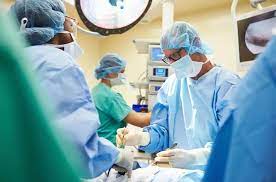Doctors operate using a keyhole on a patient with a right-sided heart to make history
A Bangladeshi man who had dextrocardia, or having the heart on the right side of the chest instead of the usual left, had the first minimally invasive (keyhole) cardiac surgery ever conducted. A uncommon congenital heart condition called dextrocardia causes the heart to beat abnormally in the chest. One in 10,000 persons experience it.
Complex triple vessel disease, a severe type of coronary artery disease (CAD) in which the coronary arteries have trouble supplying the heart with blood, affected the patient Yeashin Bhuiyan, 47.
The world’s first successful coronary artery bypass surgery (CABG) was done on Bhuiyan at Narayana Health City in Bengaluru. Doctors made a tiny incision on the right side of the patient’s chest to complete the operation.
“By completing the first minimally invasive operation on a right-side heart in history, we made history in cardiac surgery. The procedure was difficult since it was done from the right side instead of the customary left side. Significant alterations to tools and procedures were required as a result, according to Dr. Raghu M. G., a senior cardiac surgeon at Narayana Health City in Bangalore, who spoke with IANS.
“The surgeons accomplished this remarkable achievement by creating a five-centimeter incision on the right side of the chest and expertly manipulating through the ribs to reach the heart without cutting any bone. The treatment involves bypassing all coronary artery disease-related blockages and was carried out on a beating heart to ensure minimum interruption, the doctor said.
Bhuiyan, a diabetic, has been experiencing right chest discomfort brought on by activity for nearly six months. After a chest X-ray showed dextrocardia, the clinical symptoms and the disease’s cardiac cause were both present.
According to Dr. Raghu, the treatment was completed on June 16 and Bhuiyan was taken off the ventilator within four hours and released five days later, stating that “the patient’s recovery was impressive.”
Defects in genes that are handed down through families are the main cause of dextrocardia, even if the precise reason is unclear. Most persons with dextrocardia also have additional reversible organs in their chest and abdomen. These organs include the spleen, liver, lungs, and stomach. Dextrocardia with situs inversus is the term used to describe a condition when the heart and other organs are in a reversed or “mirror image” posture.
Less than 10% of cardiac anomalies are linked to dextrocardia with situs inversus, which has about the same prevalence of coronary artery disease as the general population.
Although it is not known with certainty, dextrocardia patients are suspected to have a greater incidence of CAD than the overall population.







